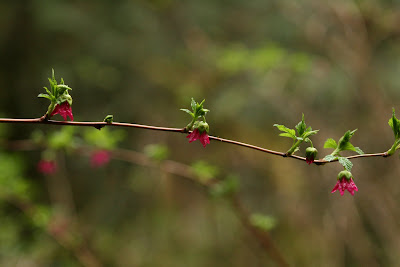Covell Creek Falls, Lewis County, Washington
To reach the waterfall take Highway 12 to Randle and turn south on WA 131 towards Mount St. Helens . About one mile south of Randle, take the left hand fork that travels up the Cispus River Valley . Follow the signs to the Cispus Learning Center and drive about 50 meters beyond the main entrance of the camp. There is a small pull-out on the right and directly across the road is the Covell Creek Trail.
Many early spring blooms graced the trail leading up to the falls. Here, a trillium calls the forest floor home.
The trail starts out gently through the mature one-hundred year old forest that was created after the great Cispus burns of 1902 and 1919. Stay of the left side of the creek, but don’t be tempted by any of the well-maintained trails turn to the left return you to the Cispus Center . A poorly maintained but well-used one hundred yard portion of the trail will drop you off on what appears to be an old road. Veer to the right and the creek will stay within sound and sight all the way to the 60 foot waterfall. It the meantime, you will be dazzled by several smaller waterfalls along the scenic little creek.
Smaller falls dot the terrain below the main falls of Covell Creek.
The trail is actually a small loop, but a blown out bridge near the start makes the first crossing a little “unofficial”.
The waterfall is hardly a secret due to the generations of Western Washington kids that have attended the various kind of camps at the Cispus Learning Center . It is worth a visit whether you have been there before or not.
GAP Photo


















